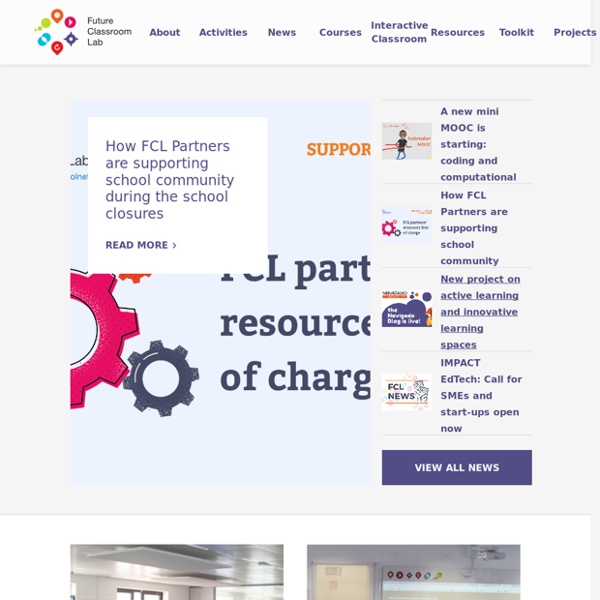



Course detail Add to favourites Online The Future Classroom Scenarios course aims to introduce teachers, headteachers and ICT coordinators in schools to concepts, tools, and exchanges about the future classroom. Innovative Technologies for Engaging Classrooms In iTEC (Innovative Technologies for Engaging Classrooms, 2010-2014), European Schoolnet worked with education ministries, technology providers and research organisations to transform the way that technology is used in schools. Over the course of the project, educational tools and resources were piloted in over 2,500 classrooms across 20 European countries, with the goal of providing a sustainable model for fundamentally redesigning teaching and learning. The project involved 26 project partners, including 14 Ministries of Education, and funding of €9.45 million from the European Commission’s FP7 programme.
edutopia P.K. Yonge views blended learning as the combination of digital content and activity with face-to-face content and activity. It looks very different in each class at the school. When a teacher has an activity that works well face-to-face, there isn't any reason to look for a digital replacement. iTEC Project Website In iTEC (Innovative Technologies for Engaging Classrooms, 2010-2014), European Schoolnet worked with education ministries, technology providers and research organisations to transform the way that technology is used in schools. Over the course of the project, educational tools and resources were piloted in over 2,500 classrooms across 20 European countries, with the goal of providing a sustainable model for fundamentally redesigning teaching and learning. The project involved 26 project partners, including 14 Ministries of Education, and funding of €9.45 million from the European Commission’s FP7 programme. The project ended in August 2014. Read more: Project summary | Evaluation results
EUN - iTEC (Innovative Technologies for Engaging Classrooms) About iTEC Updated September 2014 In iTEC (Innovative Technologies for Engaging Classrooms, 2010-2014), European Schoolnet worked with education ministries, technology providers and research organisations to transform the way that technology is used in schools.
How to use the toolkit The Future Classroom Toolkit is a collection of tools, guidance and resources for designing future classroom scenarios and using them to bring advanced and innovative learning and teaching to the classroom. The toolkit helps the user to establish a path through the process of innovation. It focuses on advanced approaches to learning and teaching that support learners in the adoption of 21st century skills. The toolkit consists of five toolsets which guide the user through the steps for creating a scenario with the aim of bringing innovation in the classroom. The term "classroom" refers not just to a traditional classroom, but to anywhere that learning takes place, including home or other places outside of school. The toolkit supports a whole-school approach to innovation by:
What Education Technology Could Look Like Over the Next Five Years In a fast-moving field like education technology, it’s worth taking a moment to take stock of new developments, persistent trends and the challenges to effective tech implementation in real classrooms. The NMC Horizon 2015 K-12 report offers a snapshot of where ed tech stands now and where it is likely to go in the next five years, according to 56 education and technology experts from 22 countries. Deeper Learning: The expert panel identified several long-term trends that will greatly influence the adoption of technology in classrooms over the next five years and beyond. They see worldwide educators focusing on “deeper learning” outcomes that try to connect what happens in the classroom to experts and experiences beyond school as an important trend. Teachers at the cutting edge of this work are asking students to use technology to access and synthesize information in the service of finding solutions to multifaceted, complex problems they might encounter in the real world.
Blended Learning: Strategies for Engagement There are methods and models for implementing blended learning -- from the flipped classroom, to the flex model. All of them are on the continuum of just how much time is spent online and in the online classroom. Blended Learning can provide a unique way of not only engaging students in collaborative work and projects, but also personalizing and individualizing instruction for students. However, there is still one piece that is missing from a great blended learning environment: engagement! As an experienced online teacher of both K-12 and higher education students, I am familiar with the challenges of engaging students in virtual work.